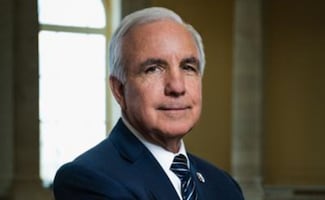Más Información

Cae en Nayarit operador financiero de "El Mencho"; detienen también a jefe de plaza del CJNG de Tlajomulco

Alistan borrador de la reforma electoral para presentarlo ante Sheinbaum este 14 de enero; Congreso tiene la última palabra: Monreal
Recently, the Trump administration has been quietly using more mobile surveillance cameras at the Mexico-U.S. border in response to the COVID-19 pandemic , although fewer people appear to be crossing illegally. This is the latest move as operations at the Mexico-U.S. border have become increasingly militarized and secretive.
Documents obtained by The Associated Press show the Department of Defense , at the request of the Department of Homeland Security , started installing 60 more mobile surveillance cameras this month after deploying 540 additional troops to the southern border. The documents are unclassified but meant for official use only and were part of PowerPoint slides created last week to brief Lt. Gen. Laura J. Richardson , commander of U.S. Army North, the primary unit overseeing military operations at the border.
The cameras are owned by Customs and Border Protection but operated by the military and will be removed after the pandemic has ended, said Matthew Dyman , a spokesman for Customs and Border Protection, which is under the Department of Homeland Security.
The reason for the additional cameras was not "based on border flow numbers" but on rising coronavirus cases in Mexico , he said.
"Each person that avoids arrest and makes further entry into the United States has the potential to be carrying the COVID-19 virus and puts American lives at risk," Dyman said in an email.
Detentions have declined by 77% since a peak in May, according to Customs and Border Protection. April figures have not been released yet but are expected to be lower.
Recommended: The Trump administration uses COVID-19 as an argument to expel asylum seekers to Mexico
The cameras were set up days before President Donald Trump signed an executive order placing a 60-day pause on issuing green cards in an effort to limit competition for jobs in a U.S. economy wrecked by the novel coronavirus.
Trump has used emergency powers during the pandemic to implement an aggressive border crackdown that has included turning away or immediately deporting asylum-seekers , including minors.
The military help means more Border Patrol agents can focus on apprehending people who cross illegally or expelling foreigners under a rarely used public health law that the Trump administration tapped amid the pandemic, Dyman said.
The addition of the mobile cameras, which are mounted in the back of trucks, bring the total to at least 192, according to the documents.
Southern border expert David Shirk sees no justification for adding cameras and troops. He pointed out that Mexico so far has a fraction of the number of COVID-19 cases that have been confirmed in the United States, while deportees flown back from the U.S. have introduced cases in their home countries.
"There is no evidence that suggests there are hordes of COVID-19 patients lined up along the border," said Shirk, an associate political science professor at the University of San Diego. "And there is no evidence that COVID-19 is even contributing to a surge in people trying to cross the border."
Recommended: Trump halts U.S. funding to the World Health Organization
The government's own numbers show the opposite. Apprehensions at the U.S.-Mexico border have been declining for 9 straight months.
Professor Shirk added: "I think the administration is clearly exploiting a crisis to try to advance its ulterior domestic policy objective of restricting immigration ."
As COVID-19 cases in the United States jumped dramatically in March, apprehensions at the border plunged to 29,953 from 30,074 in February and a peak of 132,856 in May.
That coincided with the U.S. expelling more than 10,000 Mexican and Central American asylum-seekers under public health rules that the administration quietly began using March 20, the same day Trump announced the southern border was closed to nonessential travel.
The head of the Centers for Disease Control and Prevention , Dr. Robert Redfield, extended the rules largely shutting down the asylum system until May 20. His order described a "serious danger" of COVID-19 being introduced at Border Patrol stations and ports of entry as well as further into the country.
Until now, at least 272 Customs and Border Protection employees have tested positive for COVID-19, including 62 in states bordering Mexico.
Redfield also noted that many places on the U.S. side of the border have not yet experienced widespread community transmission of COVID-19 and therefore, the pandemic in Canada and Mexico remain "a serious danger to such locations." That's despite the U.S. having the most cases in the world.
Recommended: The U.S. lost its leadership role to China
gm
Noticias según tus intereses
[Publicidad]
[Publicidad]












